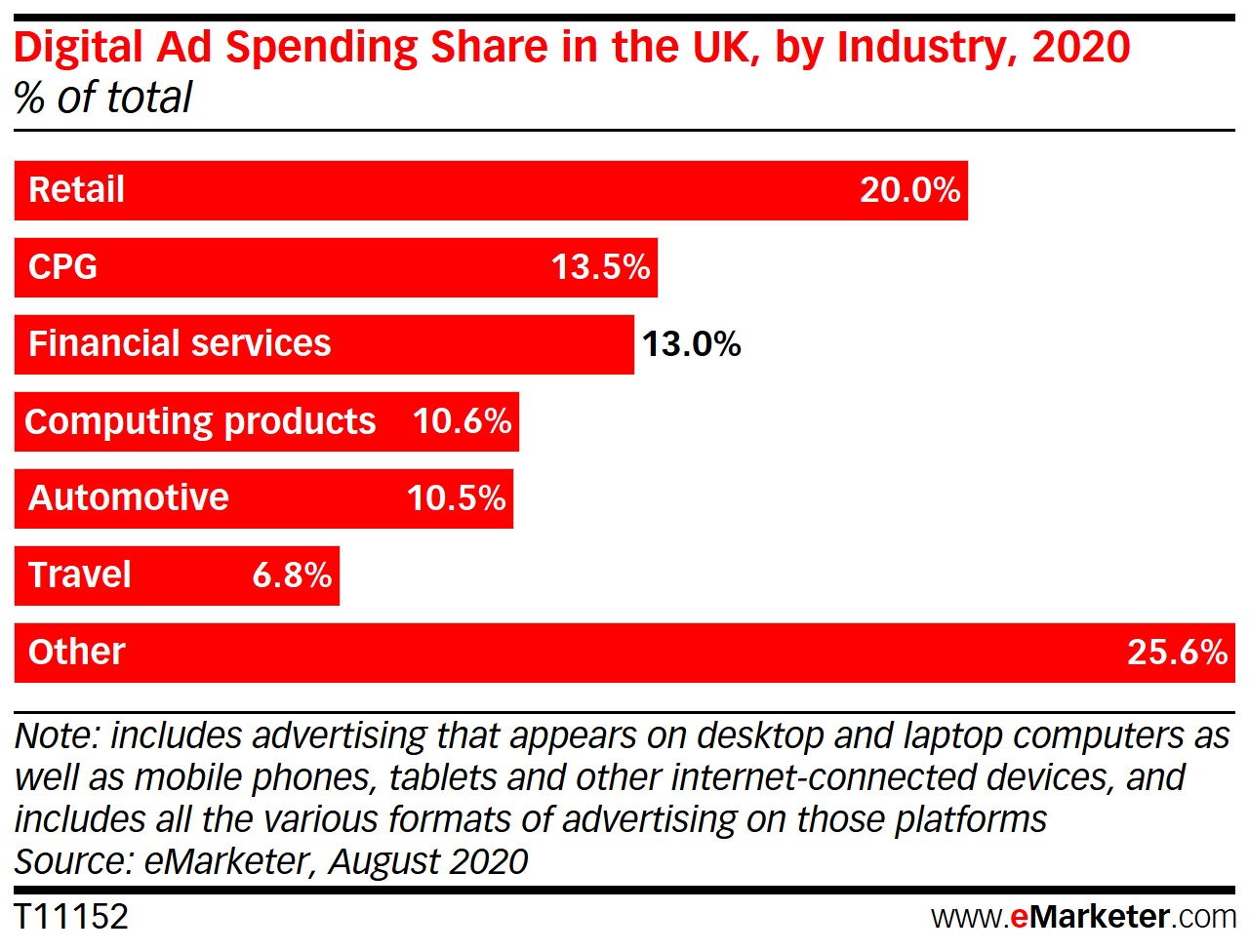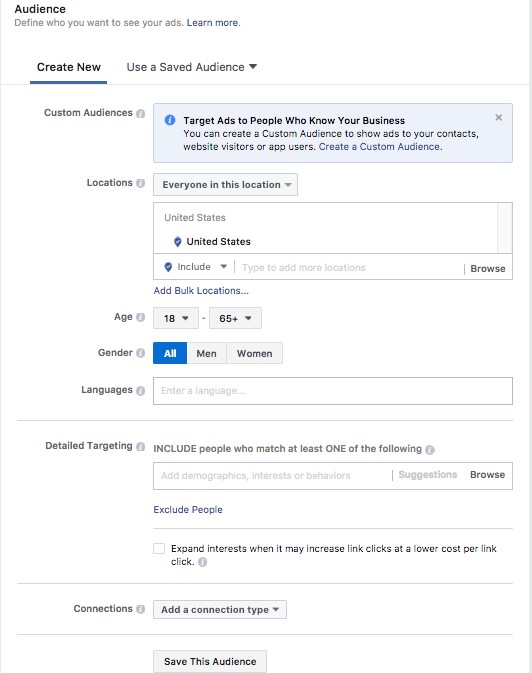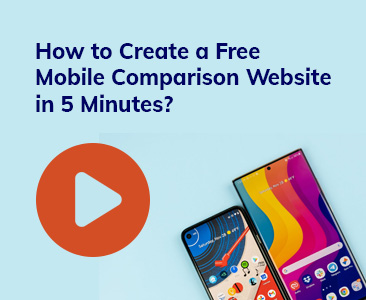- Tools
- Learn
- Help
Before you leave..
Why not download RevGlue latest free eguide.

What is display advertising?

Display advertising (also known as display ads) is a unique way of attracting audiences using visuals to engage their attention. Display ads are essentially visual adverts that appear in the form of videos and images.
Display ads are displayed on advertisement-supported websites such as Facebook and Google Display Network.
For affiliate marketers, display ads are a valuable high-converting resource. When used well, the display ad can generate income for affiliate marketers through clicks and purchases. The success for any affiliate marketers lies in the performance of their links, and display ads enable affiliates to reach wider audiences quicker, and easier.
Display ads across Google Display Network expand across 2 million sites and have a reach 90% of internet users worldwide. By placing display ads on relevant websites as ad banners, text ads, videos, and images, brands can reach global audiences quickly and effectively.
The three main types of display ads are as follows:
1. Contextual adverts: this refers to display ads that are placed on relevant websites. For example, an advert for garden furniture on a gardening website.
2. Remarketing adverts: this relates to display ads that are directed at customers who have been to your website but then left without making a purchase.
3. Site placement adverts: this type of display advertising is where the brand chooses which websites they want their display ads on.
In its very basic form, display ads are known in the industry as push approach advertising. This means that instead of consumers searching for a product and finding it (pull approach advertising), they are instead pushed into looking at the display ads.

Affiliate marketers use display ads as they are an effective way of marketing their affiliate links and getting them seen by large audiences. The use of display ads has seen a significant increase in the last decade. Statistics show that the viewability of online ads is increasing, especially in the UK.
The statistics above demonstrate that when using display ads to get the attention of your target audience, you can deliver your message directly to your consumers and the consumer base is increasing every year. Display ads are known for increasing brand awareness significantly through the medium of visual displays.
Benefits of display ads:
• You can create visually appealing and eye-catching ads
• Brands can achieve a global reach
• Increase brand awareness and visibility
• Great for small businesses to grow
• Display ads facilitate remarketing opportunities
• You can track, monitor, and analyse your ad campaigns
• Cheaper than standard advertising campaigns
• Reach consumers who are on the go
• Targeted marketing
One of the most useful aspects of display ads is that brands can use video, audio, and eye-catching graphics to ensure the branding information and products stand out. Display advertising is pre-emptive. This means that a brand can get itself and its message in front of its target audience without having to wait for consumers to come to them. Increasing brand awareness leads to familiarity with your brand, and the building of trust with your consumers.
For affiliate marketers, display ads add a strong visual element to the marketing and can link directly back to affiliate sites. They are eye-catching and engaging and provide the affiliate with the ability to scale quickly. With affiliate marketing now responsible for 16% of e-commerce sales, it makes sense for affiliates to use display ads for maximum exposure.

Display ads can be incorporated easily into your other marketing strategies. One of the most important aspects of display ads is getting your targeting strategy right. Let’s have a look at the targeting options you have available:
• Topic Targeting: this is all part of finding the right niche and choosing websites to advertise on that relate to the niche.
• Keyword Targeting: Make sure to define your target keywords and include them in your display ad. That is how Google will serve your ads on websites that contain the target keywords.
• Interest Targeting: Google has information relating to end-users and can use that to serve display ads where it feels there is interest.
• Demographic Targeting: this enables you to target your audience based on the demographic profile.
Display ads will enable your brand to target those consumers you believe are most relevant. Brands can choose which sites to display their ads on, where the ads will be shown and which niche they want to aim for.
Targeting the ads means that your ad spend is maximised and your campaign is impactful. This is especially relevant for affiliate marketers who want to see a return on their investments, and need to measure performance. For affiliates, targeted ads can generate clicks, conversions and ultimately income.
By targeting consumers on their mobile devices, brands are unlocking the potential to target people who are busy and on the move. You can direct your display ads to people who are out shopping, thereby maximizing your chance of conversions into sales.
There’s never enough options

The most successful display ads are those which target the right consumer, using the right website or platform, at the right time. This can be difficult to achieve, but all it requires is some market research relating to your target consumer, and the relevant websites.
Remarketing display ads, in particular, work very successfully for targeting customers who are interested in the products you have. Remarketing ads act as reminders to customers who have been on your website and left.
The entire function and format of display ads is centred on grabbing attention, increasing your brand awareness, and raising visibility. Targeting the audience correctly means that your display ad can bring a high return on investment for your brand.
Display ads that are correctly targeted, and that are optimised effectively can result in conversions.
How can brands optimise their display ads?
• Have a clear and punchy headline (nothing generic)
• Use clear and relevant images which align with your branding
• Have a clearly identifiable call to action button (CTA)

The estimated spend on display ads is increasing exponentially year on year. Some of the biggest and smallest companies in the world are using display ads as their main marketing strategy, allocating their marketing spends to this form of advertising.
In the UK alone, the display ad spending in 2019 came to almost £16 billion, with the retail industry leading the way with spending on digital ads.

Using a display ad campaign in your marketing strategy means that brands can measure the performance of their display ads. Brands can then adjust the cost accordingly.
To measure performance, you should check:
• how many people have seen the ads
• how many ads have been clicked into
• how many conversions there have been
• how effective the display ad has been overall.
The top metric brands like to consider is the number of impressions a display ad garners, as display ads are essentially a tool for brand awareness.
An important element of display ads that is not often mentioned is that display ads can be extremely useful for blocking your competitors. Display ads offer brands the opportunity to interrupt consumers who have been on your competitor’s websites. By targeting them and offering them similar products as the ones they have been searching for you can win their custom. This is an effective way to take customers from your competitors and gain new customers for your business.
Let’s be honest: The image has to be on point

Whilst display ads have become a popular form of marketing, you still need to work hard to ensure that the ads are seen and people click into them. The main feature of any successful display ad is its visuals.
A visually appealing display ad should have the following features:
• Distinguishable from normal website content
• Logo and company name
• Visual representation of the product or service
• Clear colours, typography, and simplicity
• Clear call to action
From the list above, the call to action is the most important. Therefore, the CTO must be prominent and should stand out against the colour palette of the display ad. The information in the display ad should stand out and be clear. Brands should use unique images and graphics whilst making sure they align with your company logo and brand images.
Tips to make your display ad visually appealing:
• Is it relevant? Is the display ad of relevance to the audience and is the information within the display ad relevant? If you have a display ad relating to make-up do you want to display it on a website about motorbikes?
• Is it legible? Will your target audience understand it? You have limited space on a display ad, so use it wisely. Make sure your audience understands the message you are trying to send, that the content is readable, the colours are not too conflicting, and the CTA button stands out.
• Is it efficient? Make sure the images and media on your ad load properly and efficiently.
• Is it non-intrusive? Make sure your display ad is not intrusive. If the audience feels like the ad is intrusive they will be less likely to engage with it or click on it. Have a clear exit button for the audience to use if they need to.
Editor’s note: Talking about the appeal of the ads, why not try our product tag solution using RevImage? One tip would be to maximise your landing pages with images embedded with product tags for easier conversion. This will help accelerate those conversions.
Running display ads with Google

If you want to create and use display ads in Google Display Network make sure you read the information Google provides about how to target your display ads at the right audience.
Google will offer you an automated targeting option, this will help you locate those audiences which are high-performing and achieve high conversion rates. The great thing about Google Ads is that it optimises your display ads over time, ensuring that you reach the right audience at the right time in the buying cycle.
In order to have a display ads campaign in Google Ads you should:
• Create a Google Ads account
• Select ‘New campaign’ tab
• Select your campaign goal, ie ‘Leads’
• Select the type of campaign you want ie ‘Run different ads across the web’
• Select the subtype for your campaign – either standard or Gmail.
• Enter the website of your business
• Name the campaign
• Select the locations for the targeted display ads
• Select the language
• Select the bidding strategy and daily budget
• Select start and end dates
• Select devices
Once you have made all the choices relating to your display ad campaign make sure you insert the URL you want the ad click to go to for tracking purposes. The option within Google Ads to select the audience and target demographic means you can enhance the targeting of your display ad and the whole campaign. For example, if you have any information or data relating to your audience, this can be used to target your display ads.
Google Ads gives you the option of targeting customers from a list you provide. This list can be based on the intentions of your audience or a list based on custom keywords and URLs. The automated targeting option enables brands to get more customers from their target audience.
Google Ads allows you to have the following types of display ads:
• Animated ads/gifs
• Video ads
• Text ads
• Mobile ads
• Image ads
• Gmail sponsored ads
• Rich media ads
A good tactic is to use 3 or 4 ads per campaign. This way you can measure the success of the different ads and then change the graphics, images, and content depending on which display ad performs the best.
Running display ads with Facebook

Facebook is home to over 2 billion active users on a daily basis. Companies are investing billions in advertising on Facebook as they want access to the users who are on Facebook. Display ads are popular on Facebook as the audience Facebook provides is often a younger, and more consumeristic, demographic. Display ads on Facebook can help you to find your audience quickly as it offers multiple targeting options including choosing the audience based on:
• Contact information
• Behaviour
• Demographics
• Interests
One of the main benefits of using Facebook for display ads is that Facebook collects performance ad data which enables brands to measure the reaction of audiences to the display ads. In addition, brands can create Instagram display ads from Facebook thereby gaining access to another huge social media platform. Facebook also offers a range of display ad formats including slideshow ads, collection ads, messenger ads, and link ads.
These are the steps you need to take if you want to create a display ad using Facebook Ads:
1. Create a campaign and campaign goals.
2. Name your campaign
3. Choose the targeting options

You can choose detailed targeting of your display ads which will enable you to refine the group of people who will see your ad. Facebook will allow you to segment your audience based on parameters which include things such as the interests of your audience, interests, and connections.
4. Select your ad placement (usually, brands select ‘Automatic Placement’
5. Select your schedule and budget
6. Create your display ad.
What every affiliate should know: conversions

Once your display ad is ready to be launched and is up and running on Google Ads, the next thing you need to be aware of is the conversion rate and the number of clicks. The conversion rate is the percentage of clicks on the display ad which led to a purchase or sale. For example, if a display ad is clicked on 100 times by 100 people, and one person made a purchase the conversion rate is 1%.
In order to monitor your conversion rate, you need to install some form of conversion tracker so you can keep track of the number of clicks and the number of sales resulting from the clicks.
To install tracking, you should go into the ‘Tools and Analysis tab in Google Ads and select the ‘Conversions’ tab. Follow the instructions to set up tracking so you can work out your conversion rate.
Don’t forget, you want to capture your reader’s interest once they click and end up on your landing page. This is the first impression the user will have of your brand, so make sure your landing page matches the content of your display ad with a clear offer made to the user.
Display ads work well, and the recommendations above will help you to maximise the scope and potential of your ad. This type of marketing will continue to be crucial to affiliate marketers because they actually work, and they do drive traffic and sales. Many affiliate marketers use display ads to monetise their websites and blogs, and brands use them to increase awareness. It is a win-win situation for all.
A summary for affiliates on mastering display advertising
• Remarketing: Start here and you will yield the best results from your display ad.
• Use managed placements: This will give brands control over the websites their ads are placed on.
• Manage your budget: Start small and then reinvest any returns.
• Formats: use as many ad formats as possible including text, video, image, audio.
• Engaging ads: Make sure your ads are visually engaging and simple.
• Ongoing monitoring: Keep on top of your performance analytics so you know what is working and what is not.
• Optimising your ads: Make sure you use keywords, a persuasive headline, a CTA button, and relevant content.

